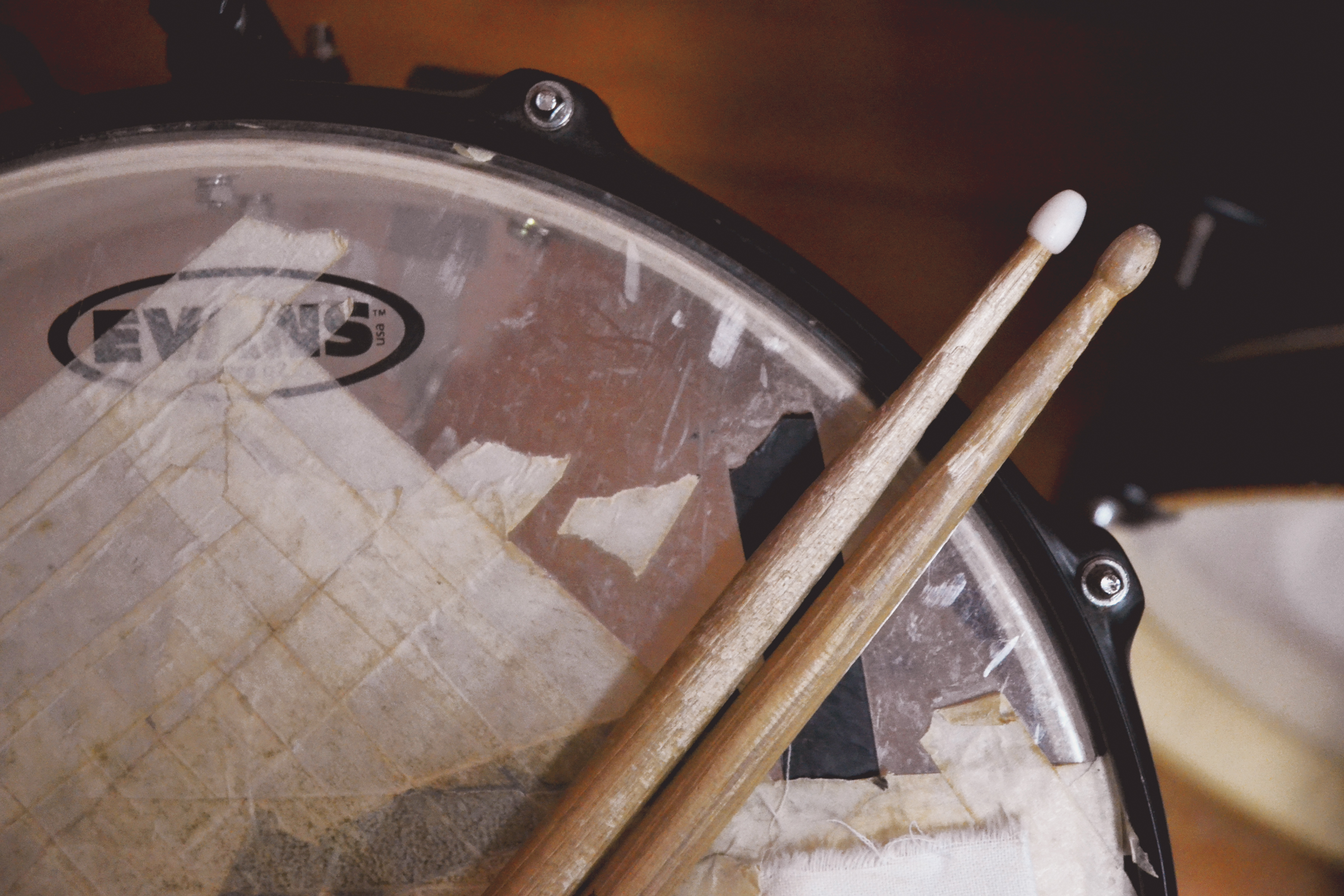How to Tune a Drum Kit
- Begin with both heads removed and first wipe down the bearing edge of the shell. The bearing edge is the angled edge of the drum shell where it meets the drum skin. Any debris here can damage the shell when the head is in place and affect the sound of the drum.
- Now take either head, fit it on the drum and place the hoop on top. Take each tension rod and screw them in until they are finger tight. Make sure you tension them evenly as this will make the rest of the tuning easier.
- Using a drum key, tighten each tension rod by 1 turn. Work across the drum tightening opposite rods, i.e. start at 12 o’clock (1 turn), 6 o’clock (1 turn) and move around the drum until you’re back to your starting point. This should be repeated until the drum skin is somewhere close to your target pitch.
- Now to fine tune, tap the drum head at each tension rod, about 1 inch from the rim and listen to the pitch. Move around the drum and consider which tension rods need to be tightened or loosened so they all are at the target pitch. Continue tapping, listening, tightening and loosening all around the drum until the pitches are the same and you are satisfied with the sound.
- Repeat this for each head on each drum of the kit.
What will I learn?
- How drum heads affect the tuning of a drum kit.
- How to tune your drum kit.
- The best way to tune your drum kit if you aren’t comfortable doing so by ear.
- What ‘dampening’ does to your drum sound
Do Drum Heads affect tuning?
The correct choice of drum head is arguably the most important part of getting a good drum sound. A good set of heads can make the most basic kits sound amazing while poor quality and badly tuned heads will always sound unpleasant. Remo and Evans are two of the biggest names in drum heads and make a wide range of great quality drum skins that have the potential to make your kit sound great.

Drum head Tuning Basics
- To get a well tuned drum kit you need to achieve several goals. First, each head must be in tune with itself. Second, the batter (top) and resonant (bottom) heads must be in tune with each other. Finally, each drum must be in tune with the kit as a whole.
- A drum head is in tune with itself when there is an even tension across the head. You can be sure that this is the case when the pitch created by striking the drum head next to each tension rod is the same. It can also be beneficial to tune each head to a specific pitch, e.g. tuning a snare drum batter head to a C.
- Tuning the resonant and batter heads to one another depends on the pitch interval between them. If our snare batter head is at a C we could tune the resonant head to the A below (a minor 3rd). Tuning the bottom head lower will generally create a deeper sound, and higher will make the drum more open and resonant. There is no right choice of interval and you should experiment until you find a sound you like.
- When considering the kit as a whole, the pitches of each drum should compliment one another. You can even consider tuning the kit to a musical scale: Our snare drum tuned to a C (dominant) could be accompanied by a kick tuned to an F (tonic) and toms tuned to other notes of the F major scale.
- When deciding on a scale to tune to you should be sympathetic to the key of the song being played. This concept is particularly effective when recording one song at a time in the studio, though when playing multiple songs live it becomes harder to find a tuning to match each.









Responses & Questions